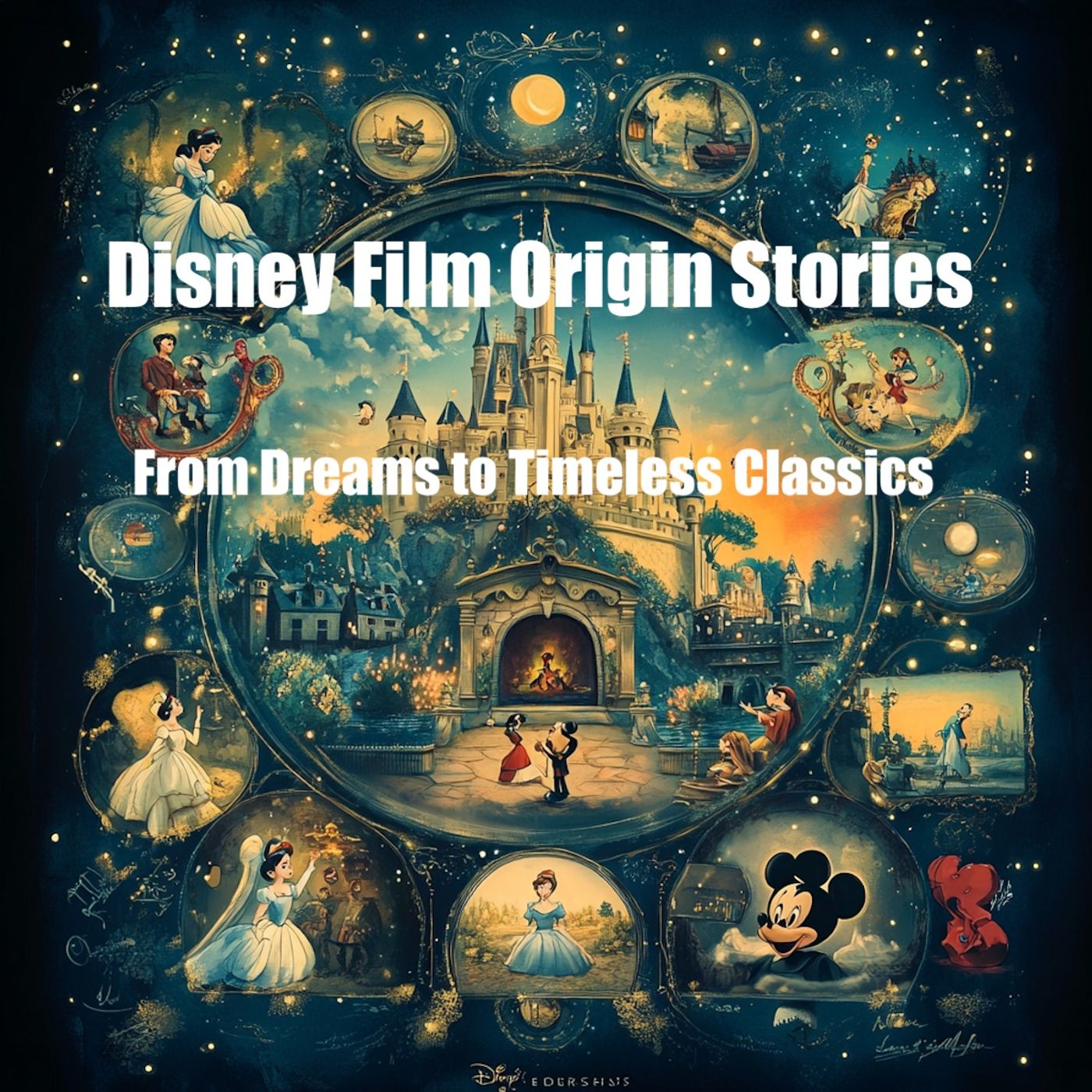Ep. 3 The Jungle Book
Description
Released in 1967, The Jungle Book is one of Disney’s most enduring and beloved animated classics. Known for its unforgettable characters, infectious songs, and heartwarming story, the film represents a milestone in the studio’s history. However, its creation was far from straightforward. It marked a pivotal moment, as it was the final animated feature personally overseen by Walt Disney before his death in 1966. The film became a testament to Walt’s storytelling instincts, his leadership, and his ability to turn creative challenges into cinematic triumphs. For Disney Studios, The Jungle Book was not just a film—it was the culmination of Walt’s career-long exploration of how to connect with audiences through humor, music, and the magic of animation. The journey of The Jungle Book began in the early 1960s when Walt Disney expressed interest in adapting Rudyard Kipling’s celebrated collection of stories, first published in 1894. Kipling’s tales, set in the lush jungles of India, were steeped in themes of survival, loyalty, and the tension between civilization and the wild. The stories revolved around Mowgli, a young boy raised by wolves, as he navigated a dangerous world populated by both friends and foes. While Kipling’s work offered a treasure trove of vivid characters and moral lessons, it also presented significant challenges for adaptation. The stories were episodic, dark, and morally complex—qualities that did not easily align with the family-friendly tone Walt envisioned for a Disney feature. Walt, always intrigued by the challenge of translating literary works into animation, believed Kipling’s characters and settings had the potential to captivate audiences. He tasked his creative team with developing a screenplay that could bring the stories to life. The project was initially led by veteran screenwriter Bill Peet, who had a history of working on adaptations for Disney, including 101 Dalmatians. Peet’s early drafts of The Jungle Book leaned heavily into the darker aspects of Kipling’s original text. His script emphasized the dangers of the jungle, portraying Mowgli’s journey as a somber, survival-focused tale that highlighted the hostility of the wild and the precariousness of human life within it. Walt Disney, however, was deeply dissatisfied with Peet’s interpretation. Although he admired Kipling’s literary artistry, he felt the tone of the script was too heavy and serious for a Disney animated feature. Walt’s instincts told him that audiences came to Disney films for joy, whimsy, and escapism—not for brooding tales about the perils of the jungle. He was concerned that Peet’s version would alienate viewers, particularly children, who were central to Disney’s audience. The tone clashed with the studio’s brand, which was built on creating emotionally uplifting and universally accessible stories. In 1963, Walt made the bold and controversial decision to scrap Peet’s work entirely and start from scratch. This decision, while risky, reflected Walt’s hands-on approach and his confidence in his storytelling vision. He stepped into the project himself, personally guiding the creative direction and restructuring the narrative to focus on character-driven storytelling, humor, and music. Walt famously instructed his team to “throw the book away,” a phrase that underscored his willingness to depart from Kipling’s text to create something more in line with the Disney ethos. This marked a significant turning point in the project and set the tone for the lighthearted, adventurous film that would eventually become The Jungle Book. Walt’s involvement extended to every aspect of the film’s development, from the storyboards to the character designs and voice casting. He understood that the heart of The Jungle Book would be its characters, and he worked closely with his team to craft personalities that were distinctive, relatable, and entertaining. Among these characters, Baloo the b
More Episodes
Disney Origin Stories: From Dreams to Timeless Classics" delves into the fascinating, behind-the-scenes tales of how some of Disney’s most iconic creations came to life. From the groundbreaking production of Snow White and the Seven Dwarfs, the first-ever animated feature film, to the intricate...
Published 11/18/24
Published 11/18/24
Disney Origin Stories: From Dreams to Timeless Classics" delves into the fascinating, behind-the-scenes tales of how some of Disney’s most iconic creations came to life. From the groundbreaking production of Snow White and the Seven Dwarfs, the first-ever animated feature film, to the intricate...
Published 11/18/24


